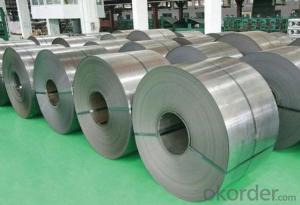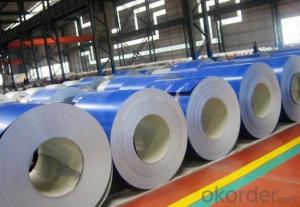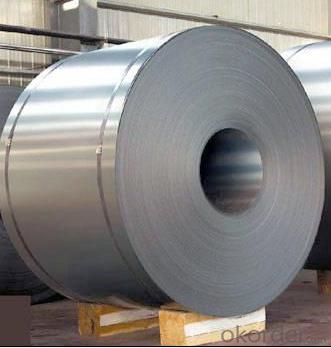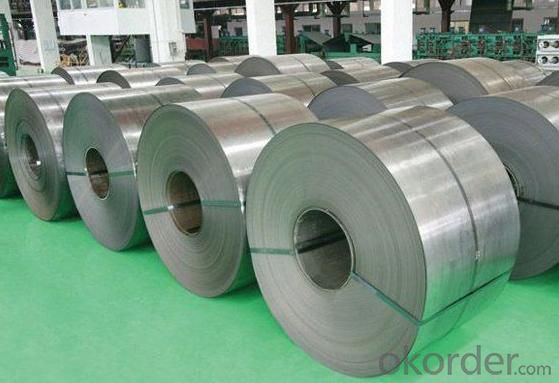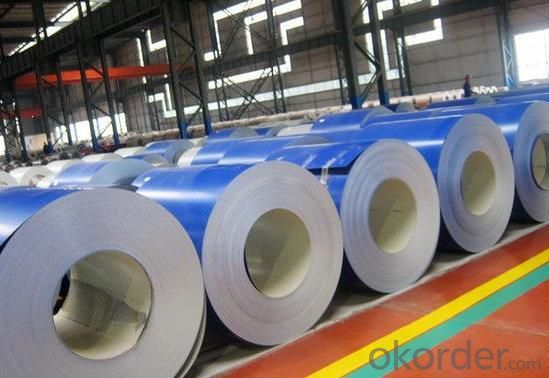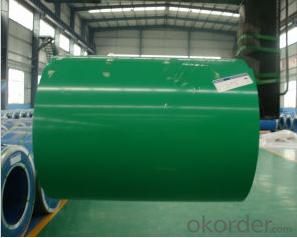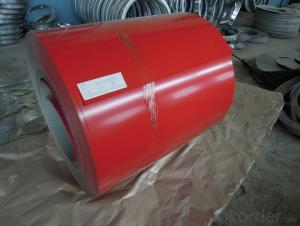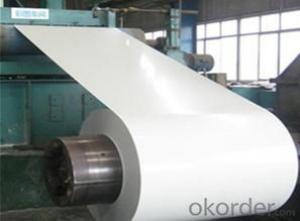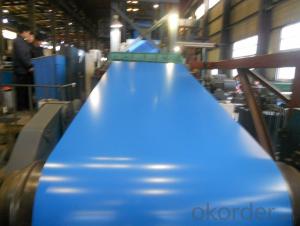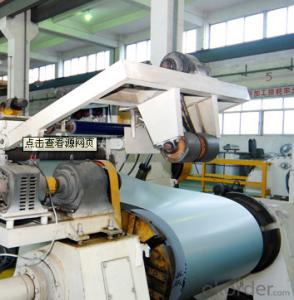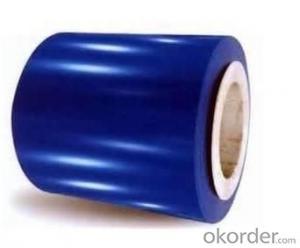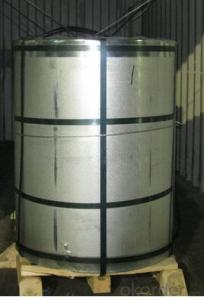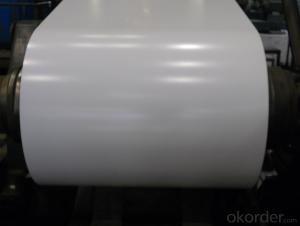Competitive Prepainted Galvanized Steel Coil of Steel Structure Buildings
- Loading Port:
- Shanghai
- Payment Terms:
- TT OR LC
- Min Order Qty:
- 30 m.t.
- Supply Capability:
- 10000 m.t./month
OKorder Service Pledge
OKorder Financial Service
You Might Also Like
Basic Info.
Model NO.:CGCC, SGCC, DX51D, DX51D+Z, TDC51D, TDC51D+Z, G550
Surface Treatment:Coated
Certification:ISO, SGS, BV
Technique:Hot Rolled
Standard:ASTM, JIS, GB, AISI, DIN, BS
Application:Building Material, Steel Structure Buildings
Edge:Mill
Stock:Stock
Steel Grade:Q195
Thickness:0.12-1.5mm
Width:600-1500mm
Zinc Coating:30g-275G/M2
Color:as Ral or Sample
Paint Thickness:Top 15-25um+Back 8-10um
Painting Type:PE, PVDF, Smp, Hdp, as Requested
Delivery Day:15-30 Days
Production Ability:30000mt/Month
Coil Weight:3-5 Ton
Export Markets:Global
Additional Info.
Packing:Sthandar Seaworthy Package
Standard:JIS G3302-1998/EN10142/ASTM
HS Code:72107010
Production Capacity:30000mt/Month
Product Description
NAME: Competitive prepainted galvanized steel coil for building
SIZE:
Thickness: 0.12-1.5mm
Width: 600mm,750mm,762mm,900mm,914mm,940mm,1000mm,1050mm, 1090mm,1100mm,1200mm, 1219mm, 1250mm,1250mm
Length: According to the customer's request
Hardness:Soft( around HRB 65) ,full hard (HRB90-95)
Strength of Extension: more than 300Mpa
Yield Strength:370-380Mpa
Thickness tolerance: +/-0.02 mm(0.01 as you requested)
Width tolerance:+/ -2.0mm
ZINC, PAINT & COLOR:
Zinc coating: 30-275G/M2
Paint thickness: Top 15-25um + Back 8-10um
Paint: Epoxy Polyester, silicon modified polyesters, polyvinylidene fluoride, high-durability polyester
| Base mental | hot galvanized /galvalume steel coil |
| Thickness | 0.12-1.5mm |
| Width | 600-1500mm |
| Coil Weight | 3-5ton |
| Quality: | DX51D DQ CQ |
| Color | all RAL colors or as per customers' sample |
| Zinc-coating | 30g/m2-275g/m2 |
| Coil ID | 508mm-610mm |
| Packing | standard seaworthy package |
| Technique | cold rolled, hot-dipped galvanizing, color coated |
| Painting | Top and bottom: 20mic+5mic RMP Back: 8mic-10mic |
| Tolerance | Thickness: +/-0.02mm Width: +/-2mm |
| Description | Pre-painted Steel Coil uses hot galvanized steel as its basic material, factory adopts advanced equipment to degrease, rinse, transform the galvanized steel, then make primary and refined lavation to the steel coils. |
| application | They are mainly applied for steel structure buildings, household appliance, furniture, transportation and other industries |
| feature | Pre-painted Steel Coils have excellent performance of decoration, corrosion resistance etc. |
| The special order can be negotiated | |
- Q: What are the challenges in coil blanking?
- Coil blanking, a process used to cut flat metal sheets from coiled stock, presents several challenges that need to be addressed for efficient and accurate production. Some of the key challenges in coil blanking include: 1. Material variations: Coiled stock can have variations in thickness, width, and surface quality. These variations can affect the cutting process and result in inconsistent blanks. Proper material selection and control are crucial to ensure consistent quality and dimensional accuracy. 2. Coil set and crossbow: Coiled stock often has inherent shape imperfections like coil set (longitudinal curvature) and crossbow (transverse curvature). These imperfections can cause alignment issues during the cutting process, leading to misalignment and inaccurate blanks. Specialized equipment and techniques, such as straighteners and leveling systems, are required to minimize these shape imperfections. 3. Coil edge condition: The edges of coiled stock can have burrs, waves, or irregularities, which can affect the quality and precision of the cut blanks. Adequate edge conditioning techniques, such as deburring or edge trimming, need to be employed to ensure clean and straight edges for the final blanks. 4. Slitting and shearing forces: The forces exerted during the coil blanking process can induce stresses and strains in the material, potentially leading to deformation or springback. These factors can result in dimensional variations and affect the overall quality of the finished blanks. Careful consideration of the slitting and shearing forces, along with proper tooling design and machine settings, is necessary to minimize these effects. 5. Scrap and material waste: Coil blanking can generate significant amounts of scrap material, especially during setup and adjustment phases. Managing scrap and minimizing material waste are critical challenges in coil blanking to optimize production efficiency and reduce costs. Efficient nesting algorithms and real-time monitoring systems can help optimize material utilization and minimize waste. 6. Automation and productivity: Coil blanking processes often require high-speed and high-volume production to meet market demands. Implementing automation systems, such as robotic material handling and advanced control systems, can enhance productivity. However, integrating and synchronizing these automation components with the cutting process can be challenging and requires careful planning and system integration expertise. Overall, addressing these challenges in coil blanking requires a combination of proper material selection, advanced equipment, specialized techniques, and efficient process control. By overcoming these challenges, manufacturers can achieve consistent quality, dimensional accuracy, and productivity in coil blanking operations.
- Q: How are steel coils used in the production of steel springs?
- Steel coils are used in the production of steel springs by being cut and shaped into the desired size and shape of the spring. The coils are then heated and tempered to improve their strength and flexibility. The steel coils provide the raw material necessary for creating durable and reliable steel springs used in various applications such as automotive, furniture, and industrial machinery.
- Q: Can steel coils be coated with fluorescent materials?
- Yes, steel coils can be coated with fluorescent materials.
- Q: How are steel coils used in the production of steel containers?
- Steel coils are an essential component in the production of steel containers. These coils, made from flat-rolled steel, are used to create the main body of the container. Firstly, the steel coils are unwound and fed into a rolling mill, where they undergo a series of processes to shape and form the steel. This includes heating the coils to a specific temperature to make them more malleable and easier to work with. The hot coils are then passed through a series of rollers that gradually reduce their thickness and lengthen them to the desired size. This process is known as hot rolling. Once the steel coils have been rolled to the required thickness, they are then cooled and cut into sheets. These sheets are then further processed to remove any imperfections or irregularities, ensuring a smooth and uniform surface. This is done through processes such as pickling, where the sheets are treated with acid to remove any scale or rust, and cold rolling, where the sheets are passed through rollers at room temperature to achieve the desired thickness and surface finish. After the sheets have been cleaned and smoothed, they are then formed into the shape of the container. This is typically done through a process called stamping, where the steel sheets are pressed into a mold using a hydraulic press. The mold determines the shape and size of the container, and the steel sheets are pressed against it with immense force, resulting in the desired container shape. Once the containers have been formed, they undergo various finishing processes such as welding, painting, and coating to enhance their durability, appearance, and resistance to corrosion. These final touches ensure that the steel containers are of high quality and meet the required standards for their intended use. In summary, steel coils play a crucial role in the production of steel containers by providing the raw material from which the containers are formed. Through a series of processes, the steel coils are shaped, cut, and formed into sheets, which are then further processed and transformed into the desired container shape. The result is a durable and reliable steel container that can be used for various applications across industries.
- Q: bullets are normally made out of lead...are there bullets that are completely steel?? (not plated)
- I personally know of no steel bullets. In order to be soft enough to engage the rifling in the barrel, it would have to have a jacket at least the thickness of the groove depth. Separate loading(those which a projectile is loaded followed with various sized powder charges) howitzer projectiles are cast steel with copper driving bands set in grooves to engage the rifling.
- Q: Hey do you know what is Steel Arch Building and how it looks like exactly??
- Typically, okorder /
- Q: How are steel coils inspected for straightness using laser alignment?
- Steel coils are inspected for straightness using laser alignment by placing laser sensors on opposite sides of the coil. The laser sensors emit a beam of light which is reflected onto a target. The target detects any deviations or inconsistencies in the laser beam, indicating any irregularities or deviations in the straightness of the coil. The data collected from the laser alignment system is then analyzed to determine if the coil meets the required straightness standards.
- Q: How do steel coils contribute to sound insulation in buildings?
- Steel coils can contribute to sound insulation in buildings due to their high density and ability to absorb and dampen sound waves. The compact arrangement of steel coils within walls or floors helps to reduce the transmission of sound, thus providing a barrier against noise and enhancing the overall acoustic performance of the building.
- Q: We all know that when we drop a small steel ball (size 3mm diameter; weight 1.10 grams) and a paper (size 11.7 inches length and 8.3 inches breadth; weight 4.5 grams) from a height. The steel ball will win the race to the ground due to its aerodynamic structure.Now imagine the same steel ball with the same weight converted to the structure similar that of paper. What will be the result? Which object will fall first; steel sheet or paper?
- The 2 objects will have the same size and shape. Therefore they will have the same air resistance. So the heavier object (the sheet of paper) will reach the ground first.
- Q: I like non-stick cookware but it dont hold up no matter how much money you spend. What isthe best kind? Is there something better then stainless steel or iron skillet? I do not care if I have to use extra elbow grease to clean a pan.
- I have a combination of them both. I have Le Creuset enameled cast iron dutch-ovens, pots and pans; as well as All Clad stainless steel saute and deep-rimmed pans which have a copper core. I have one non-stick pan that I use for cooking eggs in.
Send your message to us
Competitive Prepainted Galvanized Steel Coil of Steel Structure Buildings
- Loading Port:
- Shanghai
- Payment Terms:
- TT OR LC
- Min Order Qty:
- 30 m.t.
- Supply Capability:
- 10000 m.t./month
OKorder Service Pledge
OKorder Financial Service
Similar products
Hot products
Hot Searches
Related keywords

